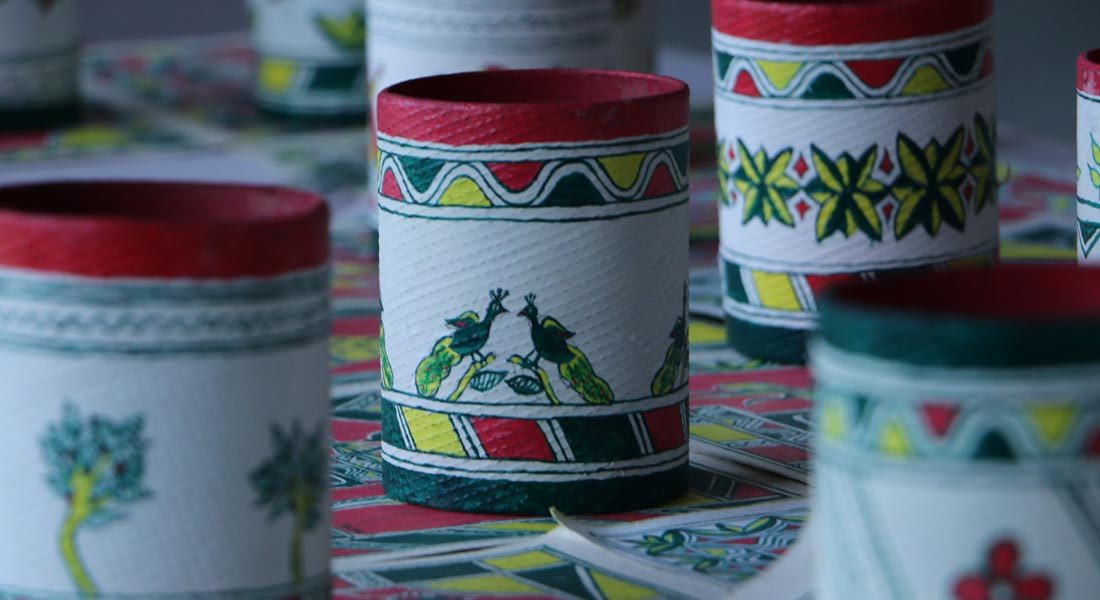Papier-mache is an ancient craft of Bihar that was used for the preparation of masks for different dance forms. It is a construction material made from paper pulp. Newspaper or waste Paper, Multani mitti, methi powder (for fragrance and protection from insects) and adhesive made from water and wheat flour is used for paper mache crafts.
Paper-Mache is a great recycle craft of Bihar.
First, the dry paper is soaked in water for about one week. After it has fragmented in the water, it is crushed in khal musal, or beaten with a hammer, to make it into a paste. Multani mitti is soaked in water for at least 24 hours. Then, the paper, Multani mitti, methi powder and adhesive are mixed together to form various shapes and sizes. The whole process is done by hand and in the end, the shapes are dried and painted to give it a perfect look.
At the present papier-mache is used in the production of utilitarian accessories and households. There is a huge collection of papier-mache crafts in the museum of Upendra Maharathi Shilp Anusandhan Sansthan. The institute also gives training on papier-mache to the students and artisans.
Source: UMSAS, Patna

